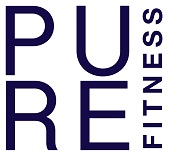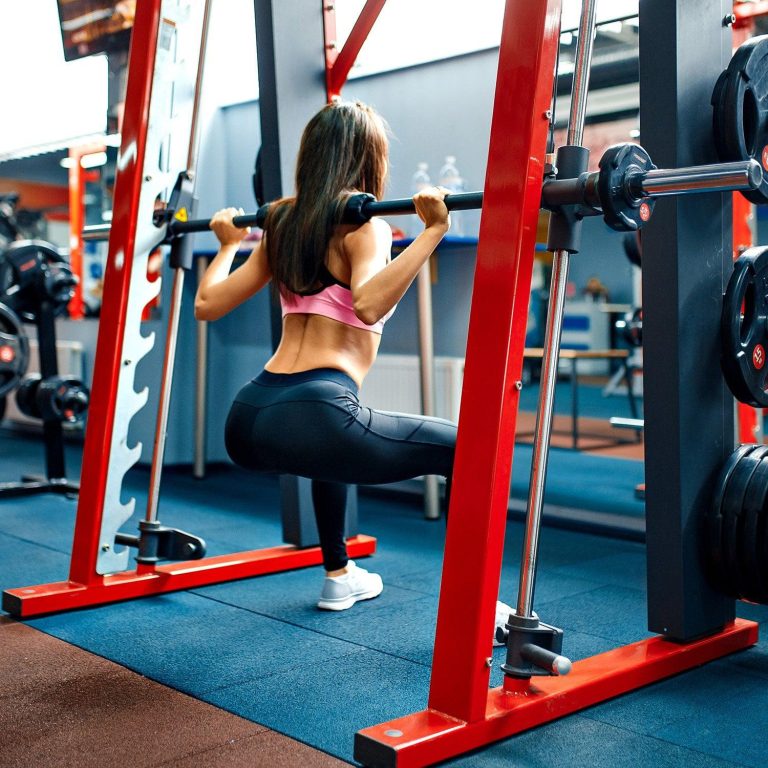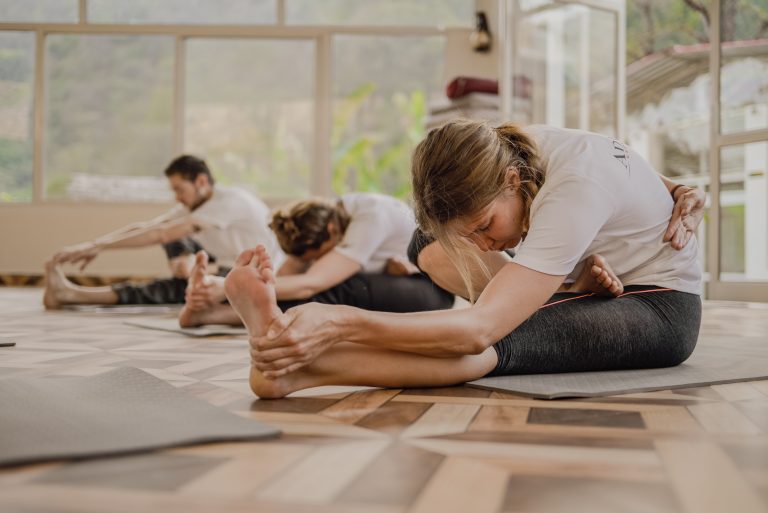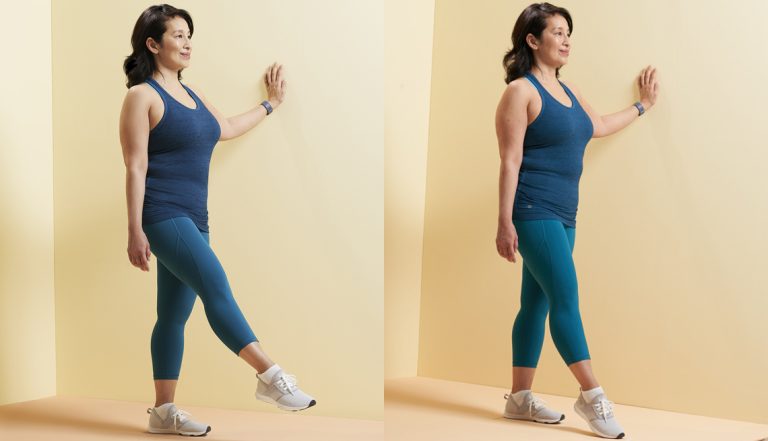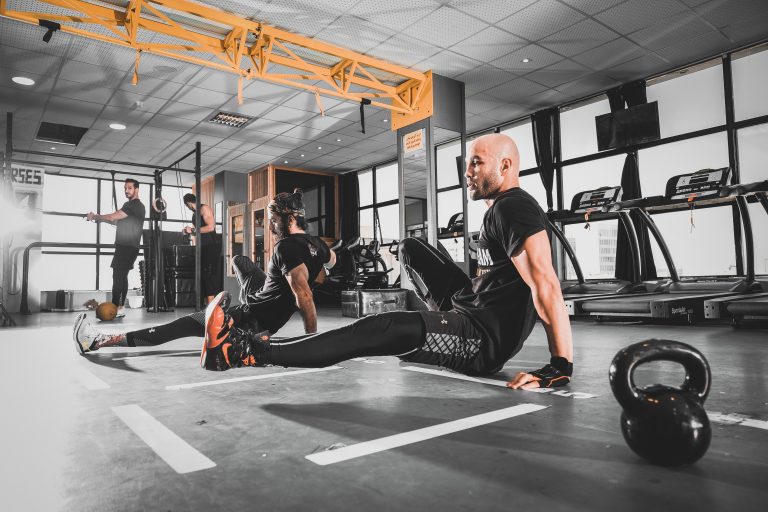Are you tired of the convenience of having a gym membership but struggling to find the time to actually go? Well, starting a home workout routine might be the perfect solution for you. In this article, we will explore the various steps and tips on how to kickstart your fitness journey without even leaving your house. From setting up a designated workout space to choosing the right exercises, we’ve got you covered. Get ready to embark on a fun and effective fitness routine right from the comfort of your own home.
Table of Contents
ToggleGetting Started
Setting goals
To start a home workout routine, it’s important to set clear and specific goals. Think about what you want to achieve through your workouts. Whether it’s losing weight, building muscle, improving cardiovascular endurance, or simply staying active, having a goal in mind will help keep you motivated and focused.
Assessing your fitness level
Before diving into a workout routine, it’s essential to assess your current fitness level. This will help you determine where to start and what exercises or modifications may be necessary. Consider factors such as your strength, endurance, flexibility, and any previous injuries or health conditions. If you’re unsure about your fitness level, consulting with a healthcare professional or a certified personal trainer can provide valuable insights.
Creating a dedicated space
Having a dedicated space for your home workout routine can make a significant difference in your motivation and consistency. Choose an area that is free from distractions and has enough room to move comfortably. Clear out any clutter and ensure you have proper ventilation and lighting. Setting up a designated space for your workouts will help create a sense of commitment and make it easier to focus on your fitness goals.
Deciding on the Type of Workout
Cardiovascular exercises
Cardiovascular exercises, also known as cardio, are essential for improving heart health, burning calories, and increasing stamina. They can be done at home with minimal equipment and include activities such as brisk walking or jogging, jumping jacks, dancing, cycling, and skipping rope. Choose cardio exercises that you enjoy and alternate between different ones to keep your workouts exciting and engaging.
Strength training
Strength training is crucial for building muscle, increasing strength, and improving overall body composition. It involves using resistance to challenge your muscles, which can be done through bodyweight exercises, dumbbells, resistance bands, or household items like water bottles or cans. Focus on exercises that target different muscle groups, such as squats, push-ups, lunges, bicep curls, and planks. Start with lighter weights and gradually increase as you gain strength and confidence.
Flexibility and mobility exercises
Flexibility and mobility exercises are often overlooked but are equally important for maintaining joint health, preventing injuries, and improving overall flexibility. Incorporate exercises such as yoga, stretching, or Pilates into your home workout routine. These activities can help relieve muscle tension, improve posture, and increase range of motion. Remember to perform each stretch or movement slowly and safely, avoiding any pain or discomfort.
Choosing the Right Equipment
Budget-friendly options
Starting a home workout routine doesn’t require expensive equipment. There are plenty of budget-friendly options available that can help you achieve your fitness goals. Resistance bands, stability balls, and jump ropes are affordable and versatile tools that can add variety to your workouts. You can also make use of everyday household items like chairs for tricep dips or water bottles for light weights. Look for sales, second-hand options, or DIY alternatives to keep your expenses minimal.
Essential equipment
While there are many exercises that can be done without equipment, having a few essential items can enhance your home workout routine. Consider investing in a yoga mat to provide cushioning and stability for floor exercises and stretches. Dumbbells or kettlebells are also versatile options for strength training. Additionally, a stability ball can be beneficial for improving core strength and balance.
Optional equipment
If you’re looking to expand your home gym setup and have the budget, there are several optional equipment choices. Treadmills, stationary bikes, or elliptical machines can provide a cardio workout similar to what you would find in a gym. Adjustable dumbbells or weight benches can offer more variety and resistance options for strength training. However, remember that these items are not necessary to start a home workout routine and can be added as you progress.
Designing Your Workout Plan
Determining frequency and duration
When designing your workout plan, consider how often you can realistically commit to exercising. Aim for at least 150 minutes of moderate-intensity aerobic activity or 75 minutes of vigorous-intensity aerobic activity per week, as recommended by health guidelines. Space out your workouts throughout the week and allow for rest days to give your body time to recover. Start with shorter durations and gradually increase the length of your workouts as your fitness level improves.
Selecting exercises for each muscle group
To ensure a well-rounded workout routine, it’s important to include exercises that target each major muscle group. Divide your workouts into upper body, lower body, and core exercises. For the upper body, include exercises such as push-ups, bicep curls, and shoulder presses. Lower body exercises can include squats, lunges, and calf raises. Core exercises like planks, Russian twists, and bicycle crunches will help strengthen your abdominal muscles.
Incorporating variety and progression
One of the keys to staying motivated and avoiding workout plateaus is to incorporate variety and progression into your routine. Varying your exercises and workout formats can make your workouts more enjoyable and challenge different muscles. For example, alternate between cardio, strength training, and flexibility exercises throughout the week. Additionally, gradually increase the intensity, number of repetitions, or weights used to continuously challenge and progress your fitness level.
Warming Up and Cooling Down
Importance of warm-up exercises
Before beginning any workout, it’s crucial to warm up your muscles and prepare your body for the physical activity ahead. Warm-up exercises increase blood flow to the muscles, improve flexibility, and reduce the risk of injury. Spend a few minutes performing dynamic movements such as arm circles, leg swings, or marching in place. This will help raise your heart rate and warm up the major muscle groups you’ll be using during your workout.
Choosing dynamic stretches
Dynamic stretching is an effective way to improve flexibility and mobility before your workout. Unlike static stretches, dynamic stretches involve continuous movement and better mimic the actions you’ll perform during your workout. Incorporate exercises like leg swings, arm circles, high knees, or walking lunges into your warm-up routine. Be sure to perform each movement with control and within a comfortable range of motion.
Cooling down exercises and their benefits
After completing your workout, take the time to cool down and allow your heart rate and breathing to gradually return to normal. Cooling down exercises can include light aerobic activity such as walking or jogging at a slower pace. Stretching exercises can also be incorporated to help lengthen and relax the muscles. Cooling down helps prevent blood pooling, reduces muscle soreness, and promotes a smooth recovery process.
Avoiding Common Mistakes
Skipping rest days
While it’s important to be consistent with your home workout routine, it’s equally crucial to give your body the rest it needs. Rest days allow your muscles to recover and rebuild, which is essential for avoiding overtraining and injuries. Listen to your body and include rest days in your schedule. Use this time for light activity, stretching, or simply enjoying a day off from your regular workouts.
Not using proper form
Using proper form and technique during your exercises is essential for maximizing results and preventing injuries. Take the time to learn and understand the correct form for each exercise you perform. If you’re unsure, consider working with a certified personal trainer or watching instructional videos to ensure you’re using proper alignment, engaging the correct muscles, and avoiding unnecessary strain or stress on your body.
Neglecting warm-up and cool-down
Skipping warm-up and cool-down exercises is a common mistake that can increase the risk of injury and hinder your progress. Warm-up exercises prepare your body for the demands of exercise, while cool-down exercises help your body recover and reduce muscle soreness. Make it a habit to include both warm-up and cool-down exercises in your workouts, regardless of the duration or intensity.
Setting unrealistic goals
Setting unrealistic goals can lead to frustration and disappointment. Be honest with yourself about your current fitness level and what you can reasonably achieve within a given timeframe. Set small, achievable goals that align with your capabilities and gradually increase the intensity or duration as you progress. Celebrate each milestone along the way, whether it’s completing a certain number of workouts or reaching a specific weight or measurement.
Finding Motivation and Accountability
Setting rewards and incentives
Staying motivated can be challenging, especially when exercising at home. Setting rewards and incentives can help keep you focused and motivated to stick to your workout routine. Treat yourself to something special after reaching a specific goal, such as buying new workout gear, enjoying a spa day, or indulging in a favorite activity or hobby. Choose rewards that align with your interests and provide a sense of accomplishment.
Recruiting a workout buddy
Working out with a friend or family member can make your home workout routine more enjoyable and increase accountability. Find someone who shares similar fitness goals and schedule regular workout sessions together. Having a workout buddy can provide support, encouragement, and friendly competition. You can also share workout ideas, swap tips, and celebrate each other’s progress along the way.
Tracking progress and celebrating milestones
Tracking your progress is key to staying motivated and seeing the results of your hard work. Keep a record of your workouts, noting the exercises, sets, and repetitions performed, as well as any improvements or challenges you encountered. Take measurements and progress photos regularly to visually track changes in your body composition. Celebrate milestones, such as completing a certain number of workouts or achieving a personal best, as a way to acknowledge your progress and stay motivated.
Creating a Schedule
Identifying the best time
Finding the best time to exercise is a personal preference. Consider your daily routine, energy levels, and any other commitments when determining the optimal time for your home workouts. Some people prefer to exercise in the morning to kickstart their day, while others find that evening workouts help them unwind and relieve stress. Experiment with different times and listen to your body to find the schedule that works best for you.
Finding a consistent routine
Consistency is key when it comes to establishing a home workout routine. Aim to exercise on the same days and times each week to create a sense of routine and habit. Find a rhythm that works for you and stick to it as much as possible. Having a consistent routine will make it easier to prioritize your workouts and ensure you’re dedicating regular time for your fitness goals.
Adapting to changes in schedule
Life can be unpredictable, and there may be times when your schedule needs to be adjusted. It’s essential to be flexible and adaptable to these changes to maintain consistency in your home workout routine. If you have to skip a scheduled workout, find alternative ways to fit in physical activity throughout your day, such as taking short walks, doing bodyweight exercises during breaks, or even incorporating active chores into your routine. The key is to stay active and make exercise a priority, even if the schedule looks different than planned.
Staying Safe during the Workout
Listening to your body
Listening to your body is one of the most important aspects of staying safe during your home workouts. Pay attention to any signs of pain, discomfort, or fatigue. If something doesn’t feel right, modify or stop the exercise. Pushing through pain or ignoring warning signs can lead to injuries. Trust your instincts and always prioritize your safety and well-being.
Wearing appropriate attire and footwear
Wearing appropriate workout attire and footwear can help prevent injuries and promote comfort during your home workouts. Choose moisture-wicking fabrics that allow your skin to breathe and keep you cool. Opt for supportive and cushioned shoes that provide stability and protect your feet and ankles. Ensuring you have the right gear will help you move more comfortably and reduce the risk of slips, falls, or other accidents.
Using a spotter when necessary
If you’re incorporating heavy weightlifting or exercises that require a spotter, it’s important to have someone present to assist you. A spotter can provide support and ensure your safety during exercises such as bench presses, squatting with heavy weights, or performing exercises with a higher risk of injury. If you’re working out alone, consider using alternative exercises or equipment that doesn’t require a spotter to minimize the risk.
Modifying exercises for injuries or limitations
If you have any existing injuries or physical limitations, it’s crucial to modify exercises accordingly to avoid aggravating the condition. Consult with a healthcare professional or a certified personal trainer to get guidance on exercises that are safe and suitable for your specific situation. They can provide modifications, alternatives, or even suggest exercises that can aid in your recovery or rehabilitation process.
Overcoming Challenges
Dealing with lack of motivation
Lack of motivation can happen to anyone, but there are strategies to overcome this challenge. Try setting smaller, achievable goals to regain a sense of progress and accomplishment. Mix up your workout routine to keep it exciting and entertaining. Find ways to make workouts more enjoyable, such as listening to upbeat music, watching your favorite TV shows or movies while exercising, or exploring new workout formats or classes online. Remember the reasons why you started your home workout routine and envision the long-term benefits to help reignite your motivation.
Managing time constraints
Time constraints can be a major obstacle when maintaining a home workout routine. However, with effective time management, it’s possible to fit exercise into your busy schedule. Prioritize your workouts by blocking off dedicated time slots in your calendar and treating them as non-negotiable appointments. Utilize shorter, high-intensity workouts when time is limited. Consider waking up a little earlier or utilizing time during your lunch break or after work. Remember, even a short workout is better than no workout at all.
Maintaining consistency during holidays or vacations
Holidays or vacations can disrupt your regular routine, making it challenging to stay consistent with your home workouts. However, these moments also present opportunities for creativity and adapting your fitness routine. Look for opportunities to incorporate physical activity during your holidays or vacations, such as exploring new outdoor activities, going for hikes, swimming, or participating in sports with family and friends. Even if you’re unable to maintain your typical workout schedule, staying active in different ways will help you maintain your overall fitness level and prevent setbacks.
Starting a home workout routine requires commitment, consistency, and a plan that meets your individual needs and goals. By setting goals, understanding your fitness level, creating a dedicated space, deciding on the type of workout, choosing the right equipment, designing a workout plan, warming up and cooling down, avoiding common mistakes, finding motivation and accountability, creating a schedule, staying safe, and overcoming challenges, you can establish a successful and fulfilling exercise routine that fits seamlessly into your lifestyle. Remember to listen to your body, celebrate milestones, and enjoy the journey towards a healthier, stronger you.
